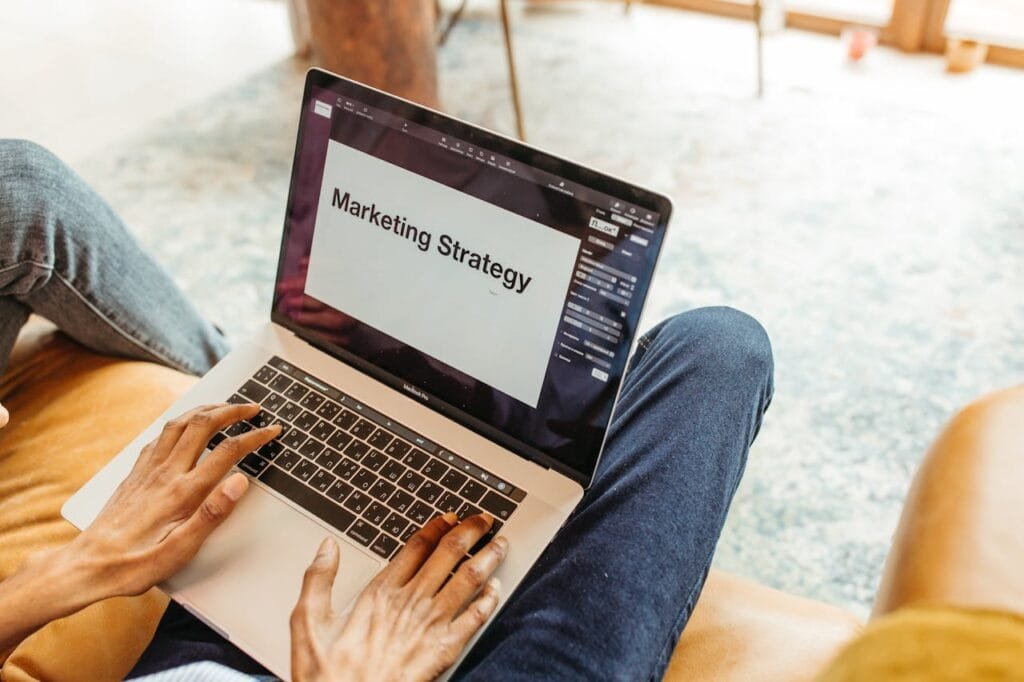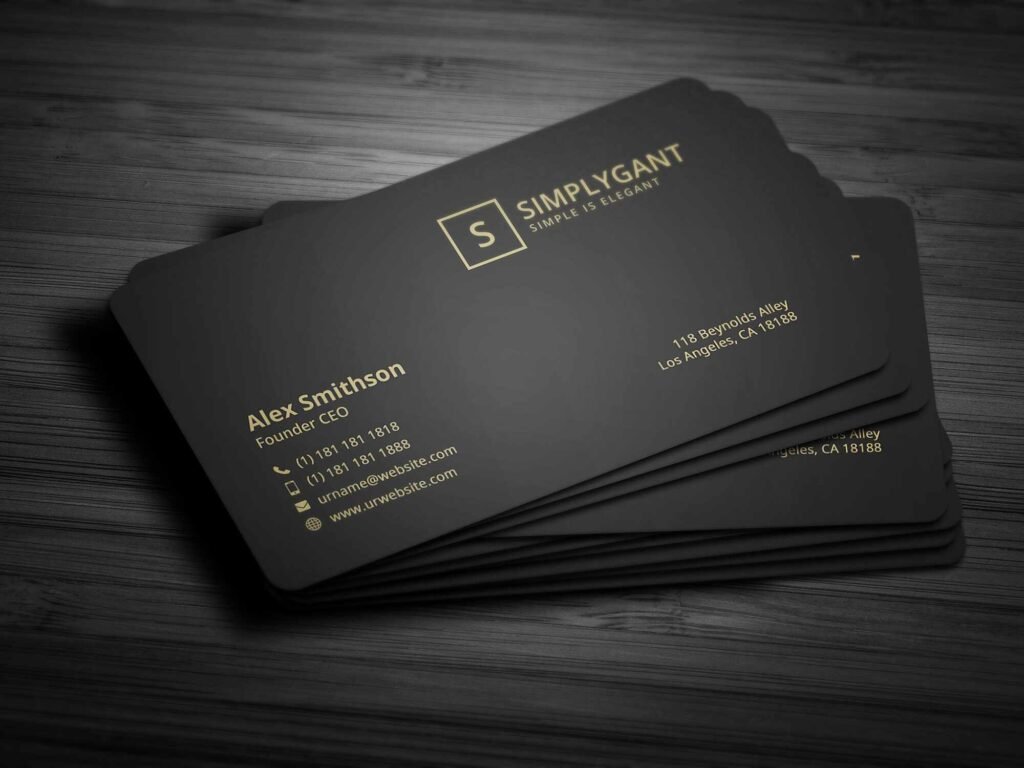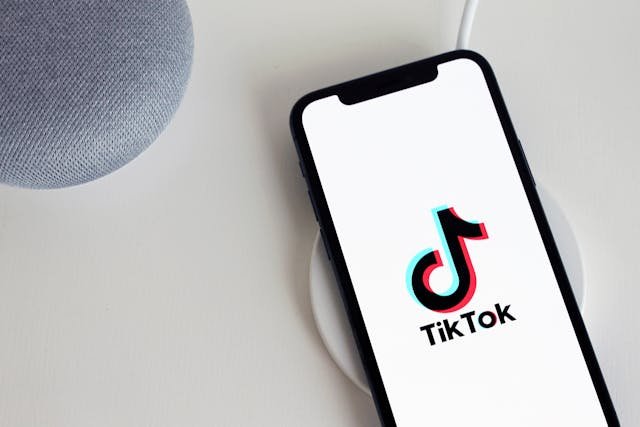Facebook is a powerful tool for marketing your business. With over 2.8 billion monthly active users, it offers a huge audience to connect with. Whether you’re a small business owner or a large corporation, Facebook can help you reach your target audience, engage with customers, and drive sales. In this guide, we’ll walk you through the steps to leverage Facebook for marketing success. From setting up your page to running ads, we’ll cover everything you need to know to make the most of this platform.
Setting Up Your Facebook Page
Choosing the Right Page Type
Selecting the correct page type is crucial for setting up your Facebook business page. Facebook offers several categories such as Local Business or Place, Company, Organization or Institution, Brand or Product, and Artist, Band or Public Figure. Choose the category that best fits your business.
This choice affects the fields available for your page and can influence how users find your page in searches. For example, a local business page allows you to list your physical address and hours of operation, which is essential for driving foot traffic to your location.
Crafting a Strong About Section
Your About section is one of the first places visitors will look to learn more about your business. Write a compelling and concise description that highlights what makes your business unique. Include keywords related to your industry to improve your page’s search visibility.
Mention your mission, values, and any unique selling propositions that set you apart from competitors. Additionally, ensure all contact information is accurate and up to date, including your website, email, phone number, and address if applicable.
Setting Up Call-to-Action Buttons
Call-to-action (CTA) buttons on your Facebook page can drive specific actions from visitors. Facebook offers a variety of CTA options like Contact Us, Book Now, Shop Now, Sign Up, and more. Choose a CTA that aligns with your business goals.
For instance, if you’re looking to grow your email list, a Sign Up button directing users to a subscription form on your website can be very effective. Make sure your CTA is prominently displayed and tested to ensure it works correctly.
Utilizing Facebook Page Templates
Facebook provides customizable page templates tailored to different types of businesses. These templates come with pre-configured tabs and layouts optimized for specific industries, such as Services, Shopping, Venues, Nonprofits, and Restaurants.
Choose a template that matches your business type and customize it to fit your brand. For example, a Shopping template includes a Shop tab where you can display your products directly on Facebook, making it easier for customers to browse and buy.
Creating a Content Plan
Before you start posting, develop a comprehensive content plan. Decide on the types of content you will share, such as blog posts, product updates, industry news, behind-the-scenes looks, customer testimonials, and promotional offers.
Determine the frequency of your posts to maintain consistency. A content calendar can help you schedule posts in advance, ensuring you have a steady flow of content that keeps your audience engaged. Incorporate a mix of educational, entertaining, and promotional content to cater to different audience interests.
Setting Up Facebook Messenger
Facebook Messenger is an essential tool for customer communication. Set up Messenger on your page to provide real-time support and answer queries. Customize your Messenger settings to include automated responses, such as greetings and away messages, to ensure users receive prompt replies even outside business hours.
Use Messenger to send personalized messages, follow up with potential leads, and provide a seamless customer service experience. Integrating Messenger with your CRM system can help you manage customer interactions more efficiently.
Optimizing for Local SEO
If you have a physical location, optimizing your Facebook page for local SEO can drive more foot traffic to your business. Include your business address, local phone number, and operating hours in the About section.
Encourage local customers to check in at your location and leave reviews. Use local keywords in your posts and descriptions to increase your visibility in local searches. Participating in local events and tagging your location in posts can also boost your local SEO efforts.
Pinning Important Posts
Pinning a post to the top of your Facebook page ensures that visitors see it first when they visit your page. Use pinned posts to highlight important announcements, promotions, events, or key information about your business.
Regularly update your pinned post to keep it relevant and ensure it aligns with your current marketing goals. A well-chosen pinned post can capture attention and drive engagement with your most critical content.
Utilizing Facebook Insights
Facebook Insights provides valuable data on your page’s performance. Regularly review these analytics to understand how your content is performing and how your audience is engaging with your page. Key metrics to monitor include page views, post reach, engagement rates, and follower growth.
Use this data to identify what types of content resonate with your audience and refine your strategy accordingly. Facebook Insights can help you make data-driven decisions to improve your page’s effectiveness.
Encouraging Reviews and Recommendations
Positive reviews and recommendations can significantly enhance your page’s credibility and attract new customers. Encourage satisfied customers to leave reviews on your Facebook page. Respond to reviews, both positive and negative, to show that you value feedback and are committed to improving your services.
Highlighting positive reviews in your posts can build trust and showcase your business’s strengths. Actively managing reviews and recommendations can enhance your online reputation and attract more visitors to your page.
Creating Engaging Content

Developing a Content Strategy
Creating engaging content starts with a solid content strategy. Begin by setting clear goals for what you want to achieve with your Facebook content. These goals could include increasing brand awareness, driving website traffic, generating leads, or building a community.
Understand your audience’s needs and preferences by analyzing demographic data and past engagement metrics. Use this information to plan your content calendar, ensuring a consistent posting schedule that aligns with your audience’s activity patterns. A well-thought-out content strategy helps maintain focus and ensures that each post serves a specific purpose.
Crafting High-Quality Visual Content
Visual content is crucial for capturing attention on Facebook. Invest in high-quality visuals that reflect your brand’s identity. Use professional photography and graphic design to create stunning images that showcase your products or services. Infographics can simplify complex information and make it more digestible.
Videos, including short clips, tutorials, and behind-the-scenes footage, can enhance engagement and convey your message more effectively. Ensure all visual content is optimized for mobile viewing, as a significant portion of Facebook users access the platform via their phones.
Utilizing Facebook Live
Facebook Live is a powerful tool for real-time engagement. Plan regular live sessions to interact directly with your audience. Use these sessions to launch new products, conduct Q&A sessions, provide live tutorials, or give a behind-the-scenes look at your business operations.
Promote your live sessions in advance to build anticipation and ensure a good turnout. During the live event, encourage viewers to ask questions and share their thoughts. This real-time interaction can foster a stronger connection with your audience and make your brand more relatable.
Storytelling Through Posts
Storytelling can make your content more engaging and memorable. Share stories about your brand’s journey, your team, and your customers. Highlight the challenges you’ve overcome and the successes you’ve achieved.
Customer stories and testimonials can provide social proof and build trust. Use a narrative style that evokes emotions and draws your audience in. Storytelling can turn ordinary posts into compelling narratives that resonate with your audience on a deeper level.
Incorporating User-Generated Content
User-generated content (UGC) is highly effective for building engagement and community. Encourage your customers to share their experiences with your products or services on Facebook. Create branded hashtags and run campaigns that incentivize UGC, such as contests or challenges.
Share user-generated photos, videos, and testimonials on your page to show appreciation for your customers and provide authentic content. UGC not only fosters a sense of community but also enhances credibility by showcasing real people using and enjoying your products.
Engaging with Interactive Posts
Interactive posts can significantly boost engagement. Create polls, quizzes, and surveys to encourage your audience to participate and share their opinions. Ask open-ended questions that invite thoughtful responses and discussions.
Host caption contests or photo challenges where followers can showcase their creativity. Interactive posts not only engage your audience but also provide valuable insights into their preferences and opinions.
Posting Timely and Relevant Content
Stay relevant by posting timely content that aligns with current events, holidays, and trending topics. Plan your content calendar around major holidays, industry events, and significant dates. Use these opportunities to share themed content that resonates with your audience.
For example, a retail business might post gift ideas during the holiday season or back-to-school tips in late summer. Timely content can increase engagement by tapping into what’s currently top-of-mind for your audience.
Highlighting Behind-the-Scenes Moments
Behind-the-scenes content can humanize your brand and build a stronger connection with your audience. Share glimpses of your daily operations, team activities, and product development process.
Introduce your team members and highlight their roles within the company. Showcasing the people behind your brand can make your business more relatable and foster a sense of transparency and trust.
Leveraging Facebook Stories
Facebook Stories offer a unique way to share short-lived, engaging content. Use Stories to share quick updates, special promotions, or behind-the-scenes moments. Since Stories disappear after 24 hours, they create a sense of urgency and exclusivity.
Utilize the interactive features in Stories, such as polls, questions, and stickers, to encourage engagement. Regularly updating your Stories can keep your audience engaged and coming back for more.
Cross-Promoting Content
Cross-promotion can expand your reach and enhance your content strategy. Share your Facebook posts on other social media platforms, such as Instagram, Twitter, and LinkedIn, to reach a broader audience.
Collaborate with influencers and complementary brands to share each other’s content. Cross-promotion can introduce your brand to new followers and provide fresh content for your audience.
Monitoring and Adapting Your Strategy
Continuously monitor the performance of your content to understand what resonates with your audience. Use Facebook Insights to track metrics such as reach, engagement, and shares.
Identify patterns and trends in your most successful posts. Use this data to refine your content strategy and focus on what works best. Stay flexible and open to experimenting with new types of content and approaches.
Engaging with Your Audience
Personalized Interactions
Personalized interactions can significantly enhance your engagement on Facebook. Use customer data to personalize your responses to comments and messages. Address users by their names and refer to previous interactions to show that you remember and value them.
Personalization can make your audience feel special and appreciated, fostering stronger relationships and loyalty. For example, if a customer comments on your post about a product they previously purchased, acknowledge their purchase and ask for their feedback. This level of attention can turn casual followers into loyal advocates for your brand.
Creating Exclusive Content for Followers
Reward your Facebook followers by offering exclusive content that isn’t available elsewhere. This could include early access to new products, special discounts, or behind-the-scenes looks at your business. Promote these exclusives to encourage more people to follow your page.
Exclusive content makes your followers feel valued and gives them a reason to stay engaged with your brand. For instance, you can host a live product reveal exclusively for your Facebook followers or offer a discount code that’s only available through your Facebook page.
Encouraging User Participation
Encouraging user participation is key to driving engagement on Facebook. Create posts that invite your audience to share their opinions, stories, or experiences. This could be in the form of questions, polls, or contests. User participation not only boosts engagement but also provides valuable insights into your audience’s preferences and interests.
For example, you could ask your followers to share their favorite ways to use your product or to submit their own designs or ideas for a new product. Highlighting and rewarding the best submissions can further incentivize participation.
Implementing a Social Listening Strategy
Social listening involves monitoring conversations about your brand, industry, and competitors on Facebook. Use social listening tools to track mentions, comments, and relevant hashtags. Analyze this data to understand what your audience is talking about, what they like, and what concerns they have. Use these insights to tailor your content and engagement strategies.
Social listening helps you stay informed about your audience’s needs and enables you to respond proactively to emerging trends or issues. For example, if you notice a common complaint about a particular product feature, you can address it directly in a post or live session, showing that you listen and care about your customers’ feedback.
Hosting Regular Q&A Sessions
Regular Q&A sessions can provide valuable information to your audience and demonstrate your expertise. Schedule these sessions at a consistent time and promote them in advance to maximize participation. Use Facebook Live or the Q&A feature in Facebook Stories to host these sessions.
Encourage your audience to submit their questions beforehand and during the live session. Answer questions thoroughly and honestly, and use the opportunity to provide additional insights or showcase related products and services. Q&A sessions can build trust and establish your brand as a knowledgeable and reliable source in your industry.

Related: Check out our free tools:

Utilizing Facebook Polls and Surveys
Facebook polls and surveys are effective tools for engaging your audience and gathering feedback. Create polls to ask for opinions on new products, content ideas, or industry trends. Surveys can be used to gather more detailed feedback on customer satisfaction, product preferences, and service experiences.
Use the insights from polls and surveys to refine your strategies and better meet your audience’s needs. Additionally, sharing the results with your audience can show that you value their input and are committed to continuous improvement.
Sharing User-Generated Content
User-generated content (UGC) is a powerful way to engage your audience and build community. Encourage your customers to share their photos, videos, and stories about using your products. Feature this content on your Facebook page with proper credits to the creators.
UGC provides authentic testimonials and showcases your products in real-life situations. It also encourages other followers to share their experiences, increasing overall engagement. Run campaigns or contests to incentivize UGC, and regularly highlight the best submissions to keep the momentum going.
Building a Community Through Groups
Facebook Groups offer a more intimate setting for building a community around your brand. Create a group related to your industry or product where members can share their experiences, ask questions, and connect with each other.
Use the group to share exclusive content, provide support, and gather feedback. Actively participate in group discussions to foster a sense of community and trust. A well-managed Facebook Group can become a valuable asset for customer engagement and loyalty.
Responding to Feedback
Responding to feedback, both positive and negative, is crucial for maintaining a strong relationship with your audience. Thank users for their positive comments and address any issues or concerns raised in negative feedback.
Show empathy and a willingness to resolve problems. Publicly handling negative feedback in a constructive manner can demonstrate your commitment to customer satisfaction and turn a negative experience into a positive one. Follow up with users who have had issues to ensure they are satisfied with the resolution.
Highlighting Customer Success Stories
Highlighting customer success stories can inspire and engage your audience. Share stories of customers who have achieved significant results or benefits from using your products or services. Use testimonials, case studies, and interviews to showcase these success stories.
Highlighting real-life examples of how your products or services have made a difference can build credibility and motivate other users to engage with your brand. Encourage satisfied customers to share their stories and provide them with a platform to do so.
Creating Interactive Content
Interactive content, such as quizzes, challenges, and interactive videos, can drive engagement and provide a fun experience for your audience. Create content that encourages users to participate and share their results.
For example, a quiz related to your industry or products can educate users while entertaining them. Interactive content keeps your audience engaged for longer periods and increases the likelihood of them sharing your content with others.
Leveraging Facebook Ads
Understanding Facebook Ads
Facebook Ads are a powerful way to reach a larger audience and drive traffic to your website. With Facebook Ads, you can target specific demographics, interests, and behaviors, ensuring your ads reach the right people. The platform offers various ad formats, including image ads, video ads, carousel ads, and slideshow ads, allowing you to choose the best format for your campaign goals.
Setting Up Your Ad Campaign
To create a successful ad campaign, start by defining your goals. Whether you want to increase brand awareness, drive traffic to your website, generate leads, or boost sales, having a clear objective will guide your ad strategy.
Use Facebook’s Ads Manager to set up your campaign. Choose your target audience based on demographics, interests, and behaviors. Set a budget and schedule for your ads, deciding how much you want to spend and how long you want your ads to run.
Creating Compelling Ads
Your ad creative is crucial for capturing attention and driving action. Use high-quality images or videos that are visually appealing and relevant to your message. Write compelling ad copy that highlights the benefits of your product or service and includes a strong call to action.
Test different versions of your ad to see which performs best, and optimize based on the results. A/B testing can help you determine the most effective headlines, images, and calls to action.
Retargeting
Retargeting allows you to re-engage users who have interacted with your website or Facebook page but haven’t converted. Use Facebook Pixel to track visitors to your website and create custom audiences for retargeting.
Show these users tailored ads to remind them of your products or services and encourage them to return and complete a purchase. Retargeting can significantly increase your conversion rates by reaching users who are already familiar with your brand.
Measuring Ad Performance
Monitoring and analyzing your ad performance is essential for optimizing your campaigns. Use Facebook Ads Manager to track key metrics such as reach, impressions, clicks, and conversions. Analyze this data to understand what’s working and what’s not.
Make data-driven decisions to adjust your targeting, creative, and budget to improve your results. Regularly reviewing your ad performance helps you get the most out of your advertising budget.
Building a Community

Encouraging User-Generated Content
User-generated content (UGC) is a powerful way to build a community and engage with your audience. Encourage your customers to share photos and videos of themselves using your products. Create branded hashtags and run contests to incentivize UGC.
Share this content on your Facebook page to showcase your customers and build social proof. UGC not only promotes engagement but also provides authentic content that resonates with potential customers.
Hosting Giveaways and Contests
Giveaways and contests can boost engagement and attract new followers to your page. Create exciting and easy-to-enter contests that align with your brand. Promote your contests through your posts, Stories, and ads to reach a wider audience.
Make sure to follow Facebook’s contest rules and guidelines. Giveaways and contests can generate buzz around your brand and encourage more users to follow and engage with your page.
Providing Value Through Content
Consistently providing valuable content is key to building and maintaining a strong community on Facebook. Share content that educates, entertains, and informs your audience.
This could include how-to guides, industry news, tips and tricks, and inspirational stories. By providing value, you build trust and loyalty with your audience, making them more likely to engage with your brand and become long-term customers.
Engaging in Conversations
Active engagement with your community is crucial for building strong relationships. Participate in conversations by responding to comments, asking questions, and showing appreciation for your followers.
Join relevant Facebook Groups and contribute to discussions without overtly promoting your business. Being an active and helpful member of your community can enhance your brand’s reputation and foster a loyal following.
Conclusion
Leveraging Facebook for marketing success involves a strategic approach that combines setting up a professional and optimized page, creating engaging content, and actively engaging with your audience.
By understanding your target audience, developing a robust content strategy, and utilizing Facebook’s diverse tools and features, you can effectively connect with your audience, drive engagement, and achieve your business goals.
Start by setting up your Facebook page correctly, ensuring it is complete with relevant information, high-quality visuals, and customized tabs. Develop a comprehensive content strategy that includes high-quality visual content, compelling storytelling, user-generated content, and interactive posts. Regularly monitor your content’s performance and adapt your strategy based on the insights gained.
Read Next:
- Content Ideas for Your Marketing Blog
- Festive Marketing Strategies for Small Businesses
- How to Market Your New Restaurant
- Patriotic Marketing Ideas for Labor Day
- SMS Marketing Statistics: Trends and Predictions for 2024






















Comments are closed.